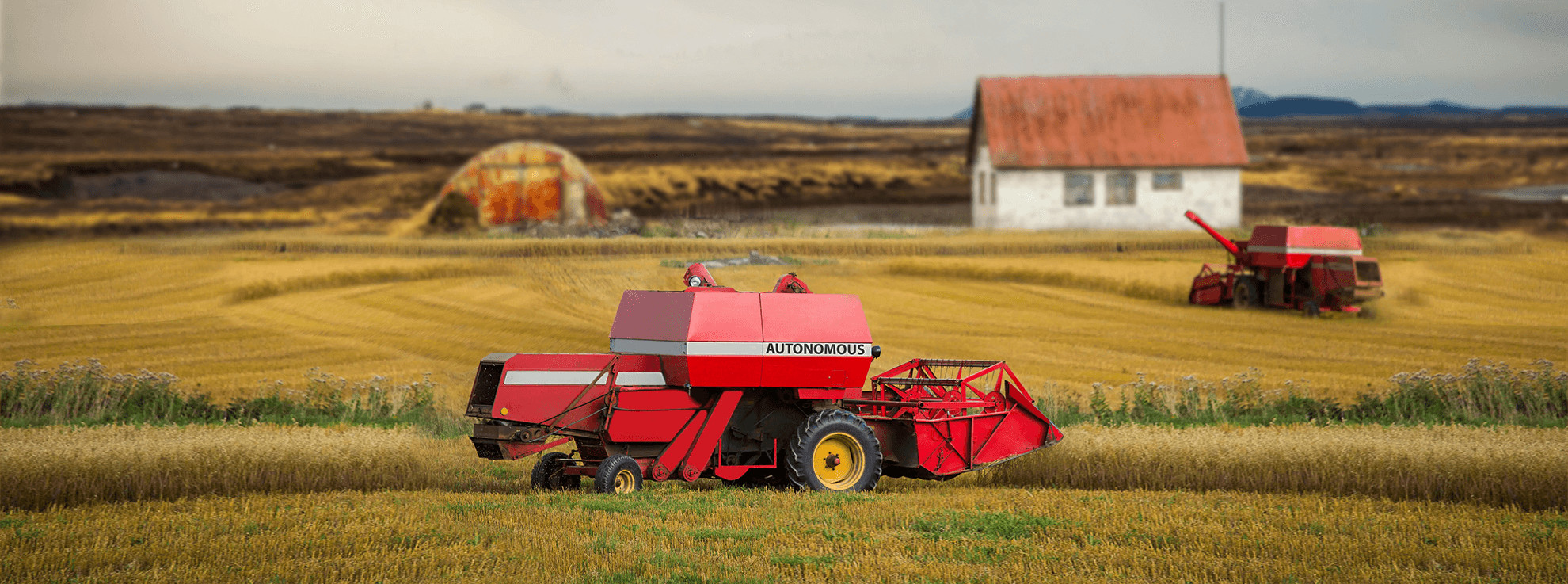The global autonomous agriculture equipment market is poised for substantial growth, projected to reach over USD 60.30 billion by 2031 with a remarkable CAGR of 20.81%. This surge is attributed to The increasing adoption of advanced technologies in farming, encompassing autonomous and semi-autonomous machinery, sensors, and robotics. The market's expansion is propelled by a confluence of factors, including labor shortages and rising labor costs, a focus on optimizing crop yield and waste reduction, and a growing dependence on advanced technologies to enhance productivity across the globe.
Rise of Automation in Agriculture
The adoption of autonomous agriculture equipment is rapidly gaining momentum. This trend is driven by several key factors:
- Labor Shortages and Rising Costs: The agricultural sector faces an acute labor shortage, particularly in developed countries. This shortage, coupled with rising labor costs, compels farmers to explore automation solutions to maintain productivity.
- Optimizing Crop Yield and Waste Reduction: Autonomous farming technologies, such as precision planting and smart irrigation, enable farmers to optimize resource utilization, leading to improved crop yields and reduced waste.
- Enhanced Productivity and Efficiency: Advanced technologies like GPS guidance, sensor networks, and data analytics empower farmers to make informed decisions, improve efficiency, and boost overall productivity.
Technological Advancements Drive Growth
The integration of advanced technologies is the cornerstone of the autonomous agriculture equipment market. Key technologies driving this growth include:
- Artificial Intelligence (AI): AI algorithms enable autonomous machines to learn from data, adapt to changing conditions, and make intelligent decisions in real-time.
- Sensors and Robotics: A wide array of sensors, including GPS, LiDAR, and cameras, provide real-time data about the farm environment, while robots perform tasks like planting, weeding, and harvesting.
- Data Analytics and Cloud Computing: Data collected from sensors and autonomous machines is analyzed to generate insights, optimize operations, and improve efficiency.
Regional Trends
The autonomous agriculture equipment market is experiencing robust growth across various regions, with North America leading the charge. Here's a breakdown of regional trends:
- North America: This region exhibits a high adoption rate of autonomous agriculture equipment, fueled by advancements in automation and control systems. The increasing popularity of indoor farming in urban areas is further contributing to growth.
- Europe: Germany, a hub for advanced manufacturing, is attracting investors seeking cutting-edge technologies. Government initiatives and investments in the agricultural sector are expected to propel the market's growth in Germany and the broader European region.
Challenges and Opportunities
While the autonomous agriculture equipment market presents significant opportunities, it also faces several challenges:
- High Initial Investment: The upfront cost of autonomous equipment can be a major barrier for entry for many farmers, especially smaller-scale operations.
- Lack of Awareness in Developing Countries: Awareness about the benefits of autonomous farming technologies remains limited in many developing countries, hindering wider adoption.
- Cybersecurity Concerns: Autonomous systems are vulnerable to cyberattacks, raising concerns about data security and the potential for disruptions in operations.
Despite these challenges, the autonomous agriculture equipment market offers compelling opportunities for growth:
- Adoption of Mechanization: The increasing adoption of mechanization in agriculture, driven by labor shortages and the pursuit of efficiency, creates a favorable environment for autonomous equipment.
- Focus on Sustainable Agriculture: The growing emphasis on sustainable agriculture practices, with a focus on minimizing environmental impact and optimizing resource use, fuels demand for precision farming technologies.
- Government Support and Initiatives: Governments worldwide are implementing programs and initiatives to promote the adoption of advanced agricultural technologies, providing financial incentives and fostering innovation.
Key Players in the Market
The autonomous agriculture equipment market is characterized by the presence of several key players, including:
- John Deere
- AGCO Corporation
- CNH Industrial
- Kubota
- Trimble
- Raven Industries
- Precision Planting
- Deere & Company
- AGCO Corporation
- CNH Industrial
- Kubota
- Case IH
- New Holland
- Claas
- Fendt
- Valtra
- Massey Ferguson
- JCB
These companies are actively investing in research and development (R&D) to develop innovative technologies and expand their market reach. They are also focusing on strategic partnerships and acquisitions to strengthen their market position.
The Future of Agriculture
The autonomous agriculture equipment market is poised for transformative growth, driven by technological advancements, the growing demand for food, and the need for sustainable farming practices. As technology continues to evolve, we can expect to see even more sophisticated and efficient autonomous machines, revolutionizing the way we grow our food.

















